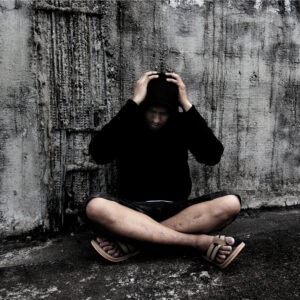Last year, we had the opportunity at PACE Recovery Center to help a young man break the cycle of addiction and begin the life-saving journey of recovery. Many of our regular readers probably remember the excellent work we did with A&E’s program INTERVENTION? The show directed their spotlight on then 23-year old Sturgill who, like so many young Americans, developed an opioid use disorder. His story was not too dissimilar from a significant portion of the more than 2 million opiate addicts in the U.S., Sturgill’s opioid use disorder stemmed from painkillers prescribed for an injury.
Opioid addiction and the eponymous epidemic is the result of liberal prescribing practices. The trend of overprescribing arose out the pharmaceutical industry’s effort to spread false or misleading information about the dangers of drugs likes OxyContin. Once patients became addicted to their painkillers, the majority found little recourse for dealing with their condition, due to limited access to addiction treatment services.
The situation in America today is not any different from when Sturgill came to PACE for assistance, the problem in America is dire. The number is not in yet for 2017, but overdose deaths are expected to surpass the previous year, which boasted the highest death toll on record. Efforts to curb the epidemic have shown some promise, to be sure, although the outbreak is far from coming to an end. Doctors still prescribe opioids with little prejudice, patients don’t receive info about opioid-alternatives for pain, and treatment centers in most of America are challenging to access.
What’s more, prescription opioids are only one facet of the epidemic; heroin, fentanyl-laced heroin, and fentanyl pills disguised as popular painkillers continue to steal American lives.
A&E INTERVENTION℠ Tackles Heroin
Last week, A&E kicked off its new season of INTERVENTION℠; this year the show’s producers decided to focus on the opioid addiction epidemic. The first episode directed viewer’s attention to what is dubbed the heroin triangle north of Atlanta, according to Daily Report. The triangle includes affluent Cobb, Fulton, and Gwinnett counties, is struggling with opioids; Cobb County District Attorney Vic Reynolds hopes the show will draw people’s attention to the heroin crisis throughout the country. He’d also like people to see some of the novel approaches utilized in North Atlanta; in an interview, DA Reynolds echoed what many experts have said about addiction for decades:
We cannot arrest our way out of this heroin epidemic,” Reynolds said. “It cannot be done.”
The series premiere last Tuesday included two one-hour episodes; if you missed them hopefully, you can catch a rerun. For the next seven weeks (Tuesday at 9 PM) INTERVENTION℠ will cover aspects of the epidemic in the areas affected greatest.
As a testament to the severity of the country’s current opioid crises, this season focuses on the victims of this epidemic and exposes the widespread impact of addiction on a community-wide scale,” Elaine Frontain Bryant, head of programming for A&E Network, said in a news release. “We are extremely proud of the tremendous work of our interventionists and we hope the stories told this season serve as a beacon of hope to those suffering directly and indirectly from opioid addiction.”
Opioid Use Disorder Recovery
When mainstream media sheds light on public health epidemics like the opioid addiction crisis, it can lead to progress. Putting human faces to something that people mostly understood via statistics opens people’s minds to the true nature of addiction. The problem we face is a disease, a mental health disorder that has no known cure but is treatable, effectively. It should go without saying that addiction treatment is the most effective tool used in addressing the epidemic. Recovery is possible if people have access to the necessary resources.
If you are one of the millions of Americans touched by opioid use disorder, please contact PACE Recovery Center.



